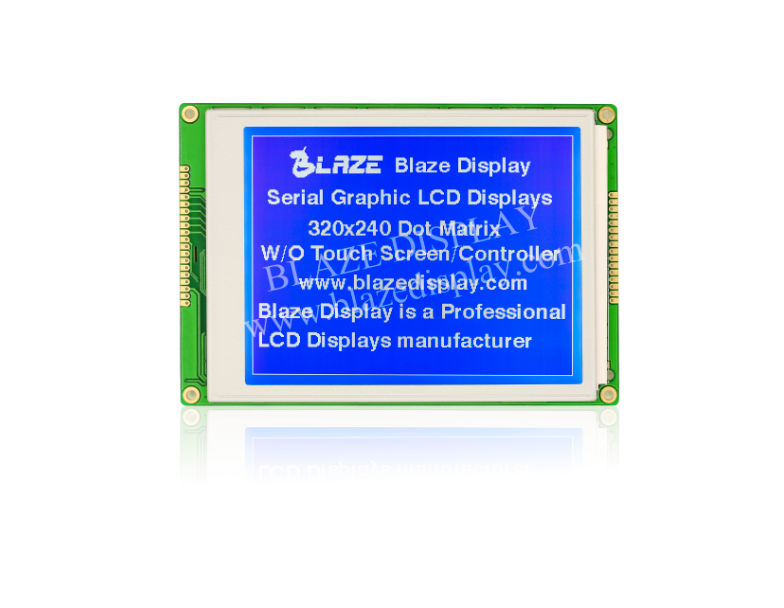Introduction of Graphic LCD Displays
Blaze Display Technology Co., Ltd. | Updated: Nov 27, 2018
What are Graphic LCD Displays?
Compared with Character LCD Displays which can only display digits or alphanumeric, graphic LCD displays can display digits, alphanumeric, and graphics. They played very important roles in the early stages of LCD display history.
Graphic LCD displays are identified by the number of pixels in vertical and horizontal directions. For example, 128 x 64 dot matrix graphic display has 128 dots/pixels along the X axis, or horizontal, and 64 dots/pixels along the Y-axis or Vertical. Each of these dots sometimes referred to as a pixel, can be turned ON and OFF independently of each other. The customer makes use of software to tell each dot when to turn ON and OFF. The early engineering work has to light/map pixel by pixel, which is very tedious work. Thanks to the LCD controller advancement, Some Orient Display graphic LCD products have many images in the memory already which greatly helps engineers to reduce the workload and make the products much faster to the market. Please check with our engineers for details.
Orient Display provides dot matrix formats of 122×32, 128×64, 128×128, 160×32, 160×64, 160×160, 192×48, 192×64,202×32, 240×64, 240×160, 240×128, 282×128, 320×240 etc.
Graphic LCD Interface
There are some popular graphic LCD interfaces, such as 8 bit or 16 bit 6800 and/or 8080 MCU interface, 3 or 4 wire SPI interface, I2C interface etc.
Fluid Options of a Graphic LCD Display
There are many options for graphic LCD displays, all of them derived from STN (Super-Twisted Nematic Display). TN (Twisted Nematic Display) or HTN (High-performance TN) displays are rarely used in graphic LCD displays because of their poor contrast and narrow viewing angles.
Positive displays can include: yellow-green STN, gray STN, positive FSTN;
Negative displays can include: blue STN, negative FSTN, FFSTN, ASTN;
Backlight Options of a Graphic LCD Display
LCD itself can’t emit light. In order to be observed under the dim light, the backlight has to be used. Back to 10 years ago, Backlight can be LED (Light Emitting Diode), CCFL (Cold Cathode Fluorescent Lamps) or EL (Electroluminescent) backlight. Thanks to the development of LED technology, especially the breakthrough of the blue and white LED technologies, LED backlight dominates the market. LED backlight can be made either bottom lit and side lit with various colors For more information, please refer to Orient Display Jazz Graphic LCD Display and Backlights.
Graphic LCD Display Controller and Drivers
The LCD controller is a small microprocessor that converts the customer’s software code (aka firmware) to information that the LCD can understand. LCD Drivers control the complex AC voltage requirements for the LCDs and they need a LCD controller to keep refreshing the individual pixel information to their drive circuitry. These ICs will typically be integrated into the LCD Modules either by COG (Chip on Glass) or COB (Chip on Board) technologies.


